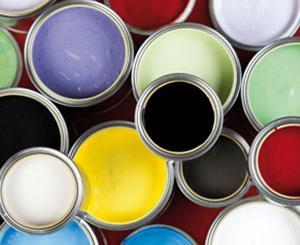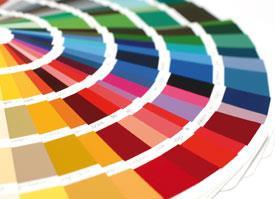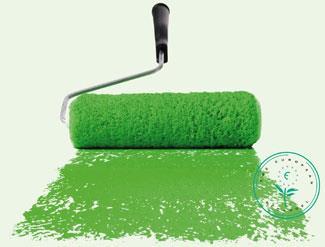As new environmental legislation alters the allowed constituents of paint and varnishes, Sarah Houlton reports on how paint manufacturers are tweaking the contents of their tins
As new environmental legislation alters the allowed constituents of paint and varnishes, Sarah Houlton reports on how paint manufacturers are tweaking the contents of their tins
Organic solvent has traditionally been an important constituent of many paints and varnishes - contributing to their smooth, glossy and durable finish. But in the EU, this is changing.
As the second wave of new EU paint legislation comes into effect - further reducing the amount of organic solvent allowed in certain types of paint and varnishes - paint manufacturers are getting creative to meet these targets while maintaining the finish and performance expected by their customers.

The aim of the EU paint directive is to reduce emissions of harmful volatile organic compounds (VOCs) from these products into the environment. Different limits have been set for different categories of paint, with initial legislation implemented in January 2007 and more stringent limits coming in on 1 January this year. Examples of affected products include gloss paint used to paint internal doors, limited in 2007 to 400g/l of VOCs and now restricted to a maximum of 300g/l.
The two main strategies being used by paint manufacturers to reduce VOC levels in paint are increasing the proportion of solids while retaining organic solvents at a lower level, or moving to water-based systems.
Watching paint dry
One might imagine water-based paint is slower to dry, but this isn’t usually the case, according to Peter Collins, technical director at the PRA Coatings Technology Centre in London, UK. ’One of the problems with water-based decorative gloss paints is that the water can come off too quickly, and doesn’t allow you enough time to work with the paint,’ he says.
Water-based paints also tend to be less glossy, but there are known tricks for upping their glossiness such as using a tighter particle distribution. This improves pigment dispersion, while avoiding the tendency of particles to clump together as water-borne paint dries.

Unlike glosses, emulsion paints for walls and ceilings have long been water-based, and the technology used here - largely acrylic dispersion polymers - is now being applied to gloss paints. ’The problem is that it doesn’t always behave as nicely under the brush as a solvent-based alkyd solution polymer,’ Collins explains. ’It’s more difficult to spread to give a smooth, even surface. In many areas it wouldn’t show, but on a door it would be noticeable.’
Most emulsion paints aren’t actually emulsions at all, but the acrylic dispersion polymer they contain is made using a process called emulsion polymerisation. Liquid monomers are emulsified, and then polymerised as suspensions. True emulsification technology is now being applied to water-based paints, where alkyd polymers, similar to those in solvent-borne paint, are emulsified into water at elevated temperatures. While they don’t behave quite as well as solvent-based gloss paints in terms of flow and appearance, Collins says, it’s possible to get far more gloss than with traditional acrylic polymers.
Alkyd resins are polymers with a polyester backbone, to which naturally occurring fatty acid side chains - frequently derived from soya bean oil - are attached. ’There is a lot of biorenewable content, and they tend to be lower in molecular weight than the acrylic emulsions,’ he says. ’When you paint an alkyd paint onto a door, the solvent evaporates off, leaving a solution polymer and the pigment behind. When you first apply it, it’s sticky - a little like flypaper - but the solvent continues to evaporate off and at the same time the soya bean oil starts to react with oxygen in the atmosphere, with the oxygen functioning as a crosslinker. So the polymerisation process is finished off after painting with an alkyd paint, which is important as if they had a higher molecular weight the paint would be too viscous to apply with a brush.’
Collins adds that acrylic emulsion polymers with crosslinking potential are now being developed, and self-crosslinking acrylic emulsions are starting to appear on the market. PRA recently evaluated decorative gloss paints from a wide range of paint manufacturers and raw material suppliers across Europe. ’One thing that surprised me was half of the paint samples we received were solvent-borne high solids formulations that met the 300g/l limit, and half water-based,’ he says. ’Only three of the water-based ones were acrylic emulsions - most were alkyd emulsions, with a few polyurethane dispersions.’
Whether it is solvent- or water-based, a decorative paint contains pigments to give it colour, and a binder which holds the paint together and causes it to adhere to the surface. Additives are also often included to alter its properties, such as viscosity, wetting or pigment stability. Historically, lead was common, but after its ban in domestic paints on toxicity grounds half a century ago, most now contain white titanium dioxide instead.
A greener shade of green
However, TiO2 is not ideal on an environmental front either, as it takes large amounts of energy to manufacture it from ore. ’Recently, paint manufacturers have introduced products that lessen the environmental impact by using clever formulations to reduce titanium dioxide levels,’ Collins says. ’As the water dries out of the emulsion, dry hiding takes place - the apparent opacity of the dry film is higher than that of the wet film - as the water is replaced by air, giving microscopic voids in the paint film, which can scatter light, and reduces the refractive index of the matrix. It’s almost like giving each TiO2 particle a boost in terms of its opacifying power. You might even get to the point where you could formulate with little or no TiO2, just using air as your pigment. But there would be many problems to overcome here, including that the paint would look pretty transparent until it dried.’

TiO2 level is one of the criteria in the EU Ecolabel for paint, which sets stringent requirements for a product’s manufacture, use and disposal. While this hasn’t had a great uptake in the UK so far, elsewhere in Europe it has been much faster, and Germany was ahead of the game with the Blue Angel scheme that predated the EU Ecolabel. Earthborn claims to be the only UK company whose paints currently carry the EU Ecolabel flower symbol; these are manufactured for them by specialist German company Ecotec Naturfarben.
According to Ecotec’s Johannes Putz, the philosophy of natural paints has changed over the past 20 or 30 years. ’It used to be about what was going into the paint - was it renewable or not,’ he says. ’Now what comes out of the paint is more important.’ Germany has been ahead of the game on the environmentally friendly paint front, and according to Putz more than half of the companies globally making eco-paint are German.
An old idea has provided an excellent way of making eco-paint - using vinegar esters as a binder. ’The idea for these is at least 70 years old - back in the 1930s the German rail board used an acetate-based paint on the trains, but the raw materials were quite expensive,’ he says. And this is the problem here - not performance, but cost. ’Now, more customers are willing to pay a higher price for a paint that is environmentally friendly.’
The colour range isn’t limited, either. ’With clay paints, there are seven colours from the different types of clay, and then we have a range of 126 colours by using a tint as well,’ Putz says. ’These tints are also VOC free, and it takes longer to get the right formulation compared to conventional tints.’
Va va vroom
Car paints are also included in the EU paint directive, with new lower VOC limits set for products such as metal primers, top coats and special finishes. The ultra-harsh conditions car paint has to withstand mean meeting the new VOC targets for these products has been even more complicated than for wood paint.

In the same way as painting wood, the metal of the car is first treated with a primer, to give adhesion and ensure the surface is flat. However, in cars the top coat is split into two, explains Mark Korsmit, sales manager of the car refinishes division of the Dutch paint company AkzoNobel. First the colour is painted on, followed by a varnish to give gloss and protection from hazards such as ultraviolet radiation and chemicals. ’Because of the high colour specifications and the special effects like metallics or pearlescent paints, splitting the two functions up gives better performance and more degrees of freedom,’ he explains.
Performance is even more critical in a Formula 1 car, and AkzoNobel worked with the McLaren Mercedes team to develop a paint system that optimises the car’s performance and keeps its chrome finish, while meeting VOC requirements. ’It’s not just one colour - as well as the chrome, there is a fluorescent red, grey metallic, black and white,’ Korsmit says.
As with any car, the first layer is a primer, followed by a sealer to give a high gloss flat surface. On top of this comes six layers of the chrome, and then a high performance clear coat that is formulated with a very low level of VOCs. ’The six layers of chrome are extremely thin,’ he says. ’A normal paint layer applied by a brush is close to 100 m m thick, and with a spray gun this can be reduced to 25 or 50

m. But this chrome layer is less than 5 m m thick. The other colours such as the fluorescent red are then painted on top.’
The paint is cured after every layer, not using an oven but with a special infrared arch. This heats up and cools down in a matter of seconds, giving a very fast throughput. Providing a coating that has sufficient hardness while retaining a low VOC content proved to be a major challenge. ’We made small changes to the binder molecules which made the coating dry slightly faster, and have the right properties,’ explains Floor Minne, group leader of research and development at AkzoNobel’s colour finishes division. ’Binders are difficult. Normally, if they will be hard in the end, binders have high molecular weights but are difficult to get into solution, but lower molecular weight polymers will be too soft. The ideal would be a low molecular weight system that goes hard. And that’s difficult.’
Finding one involves trial and error - make the likely looking polymers and test them out in a real coating system. ’There are multiple raw materials in the paint and the chemistry is complex, so you really have to try it out on a car,’ he says. ’The conditions for applying the paint are also crucial - which temperature, what humidity, as these can influence the end results. It’s just like making a cake - it’s easy when you read the packet but when you make it, it always tastes different!’

A clear coat that gives an ultra-high gloss finish is the latest AkzoNobel product. ’This is important in Formula 1 as the surface needs to be completely flat to reduce air resistance,’ he says. ’But that’s also what ordinary car drivers like. So we are now launching the coat into the marketplace,’ says Korsmit. ’It’s not just engineering where developments for Formula 1 have important applications in the real world - we can use all the knowledge we gained from the McLaren project in our regular paint system.’
Contentious construction
A different approach to lowering VOC levels, being taken by German company Bayer MaterialScience, is developing polyaspartic raw materials as binders in new top coat technology. This hard-wearing paint is being used in the construction industry - who must also meet these tightened regulations - for applications including coating bridges, concrete and tunnels.
’Polyaspartic coatings are formed by the reaction of the secondary amine aspartics with aliphatic polyisocyanates,’ explains Bayer corrosion protection expert Markus Mechtel. ’The reaction speed of both components can be controlled by the variation of steric hindrance of the amino group in the aspartic’s chemical structure, leading to a wide range of curing conditions.’
Polyaspartics are relatively low viscosity, which allows ultra-high solids coating formulations to be created that can be close to zero-VOC. ’They dry significantly more quickly at room temperature than conventional top coats, which enables faster further treatment and earlier transport of the coated parts,’ he says. ’They also enable significantly greater film thicknesses to be achieved, with a dry film thickness of up to 400 m m being possible in a single operation. In practice, this enables a coat to be saved. The increase in efficiency is particularly important if the coating process is part of a process chain; rapid drying and reduction in the number of coats enables a significant increase in productivity to be achieved.’ Mechtel adds that the coatings have high weatherability, chemical and mechanical resistance.
This technology was put to good use in the recent refurbishment of BayArena, the home football stadium of Bundesliga team Bayer Leverkusen in Germany. It has a discus shaped, translucent roof with a diameter of 217m, made of Makrolon polycarbonate sheeting. ’To ensure durability, the steel support structure, weighing around 3000 tonnes, was given an anticorrosion coating based on polyaspartic raw materials,’ says Mechtel. With large structures such as bridges and power plants, a three-coat paint system is normally needed to provide protection against the ravages of wind and weather. ’With our polyaspartic coating, two coats were sufficient because of the higher film thickness with each application,’ Mechtel says. The schedule for the refurbishment was extremely tight - it had to be finished in time for the start of the next football season, and the rapid drying and fewer coats were instrumental in meeting the deadline.
Sarah Houlton is a freelance science writer based in London, UK






No comments yet